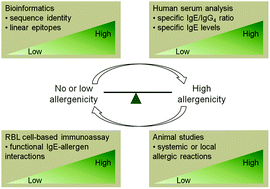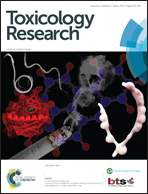A modified weight-of-evidence approach to evaluate the allergenic potential of food proteins
Abstract
Assessment of the allergenic potential of food proteins, including novel proteins, is an important issue. However, the current weight-of-evidence approach cannot provide a direct evaluation of the inherent allergenic potential of food proteins. In order to make up for this deficiency, we made some supplements or modifications to develop a more comprehensive strategy, involving consideration of the epitopes of allergens, biochemical characterization (i.e., resistance to digestion in simulated gastric fluid, heat stability), human serum analysis, and appropriate cell models and animal models to evaluate the allergenic potential of food proteins. Results indicated that the bioinformatics used can directly predict the linear epitopes of food allergens in addition to the sequence homology comparison. Human serum studies may assess the clinical reactivity of food allergens based on the combination of the specific IgE/IgG4 ratio and the specific IgE levels. Further, an RBL cell-based immunoassay is applied to explore functional IgE–allergen interactions. The final step consists of dissecting the mechanism behind the allergenicity of food proteins by animal studies. In conclusion, we reported a modified weight-of-evidence approach to evaluate the allergenic potential of food proteins but not novel proteins. This modified approach provides an integrated, stepwise and direct evaluation of the allergenic potential of a wider range of food proteins.


 Please wait while we load your content...
Please wait while we load your content...